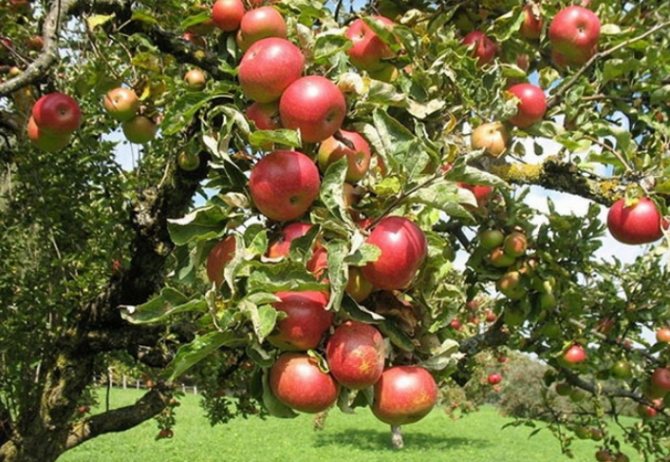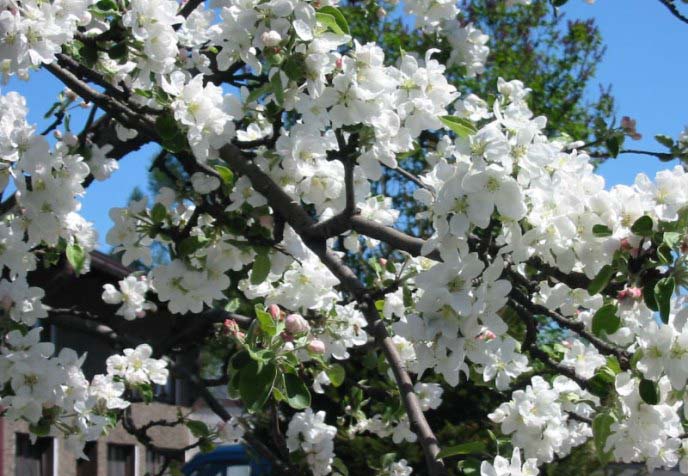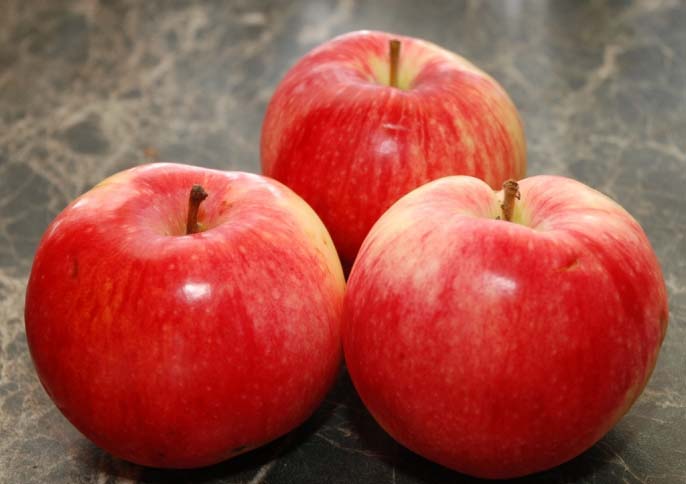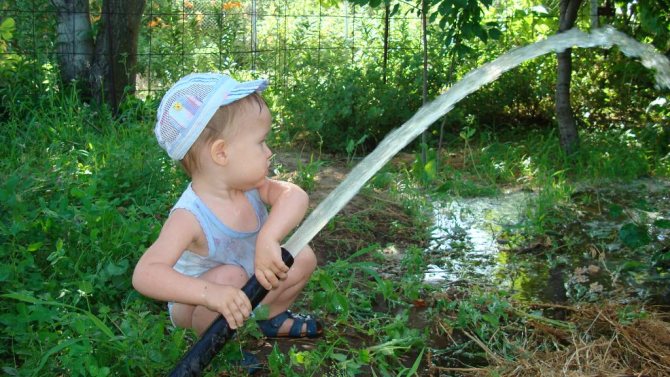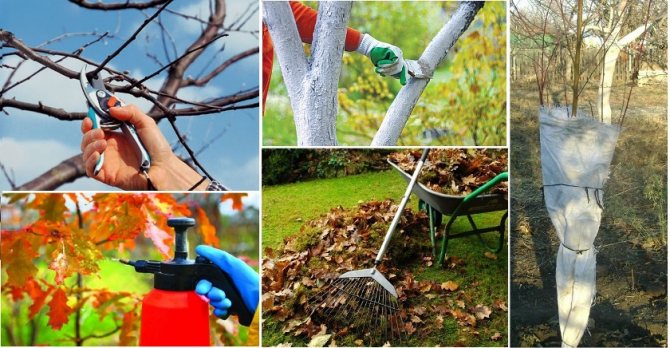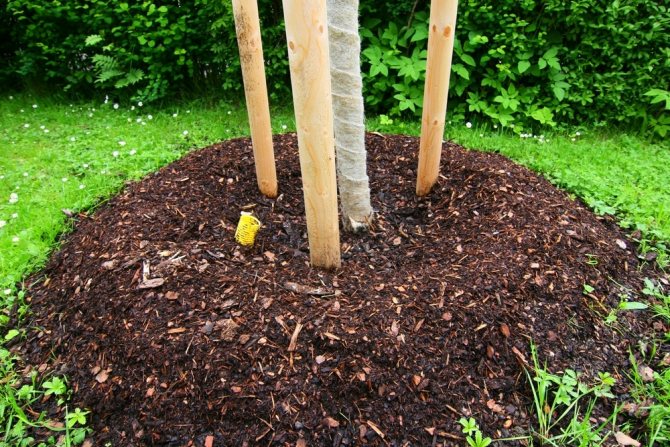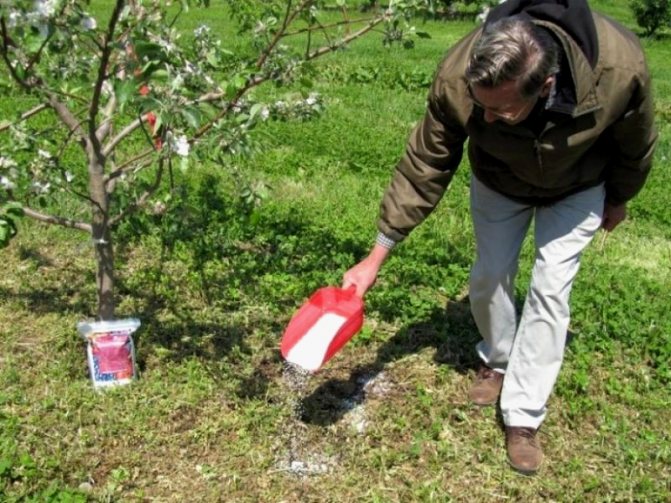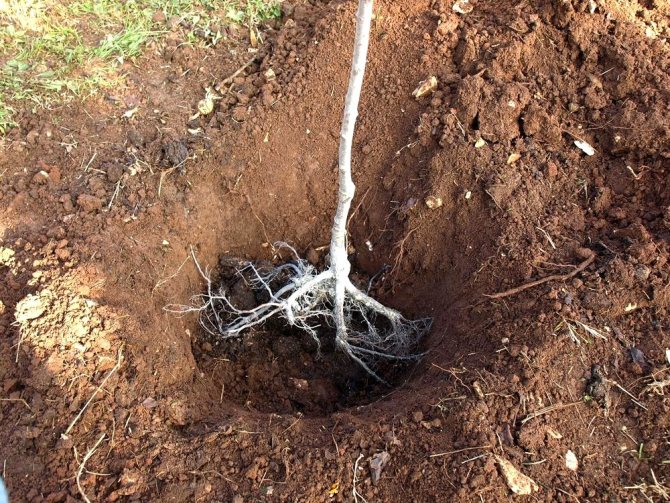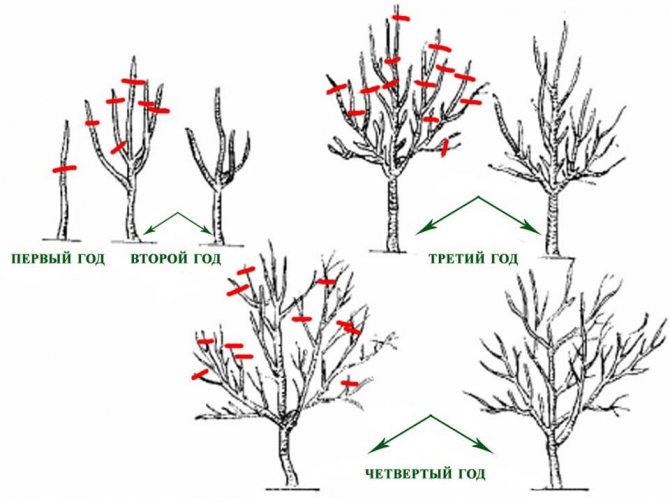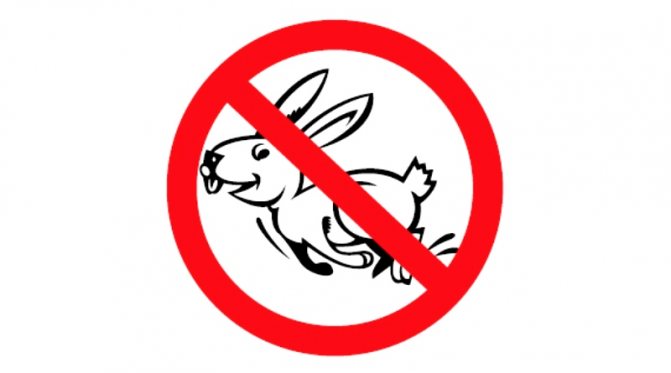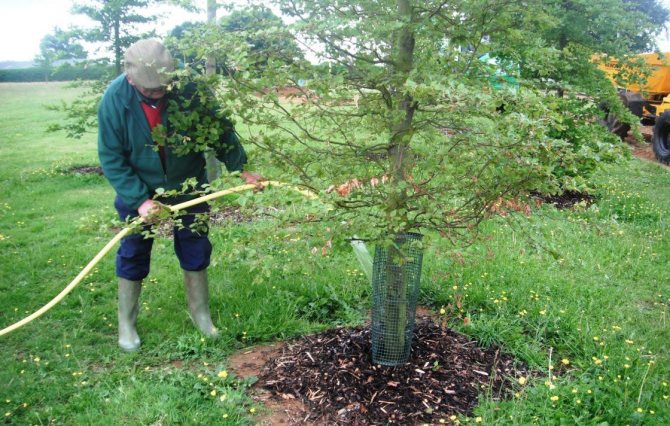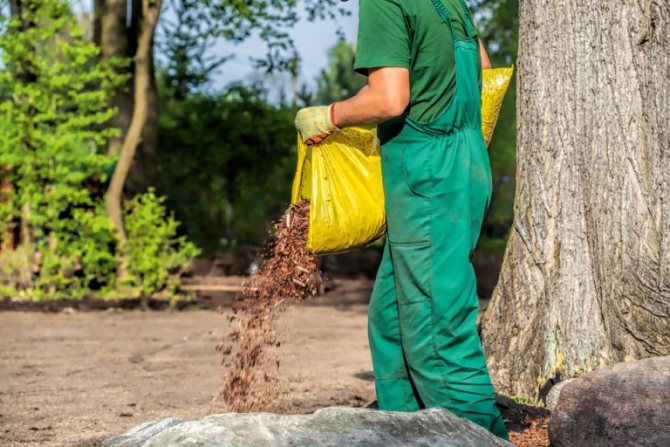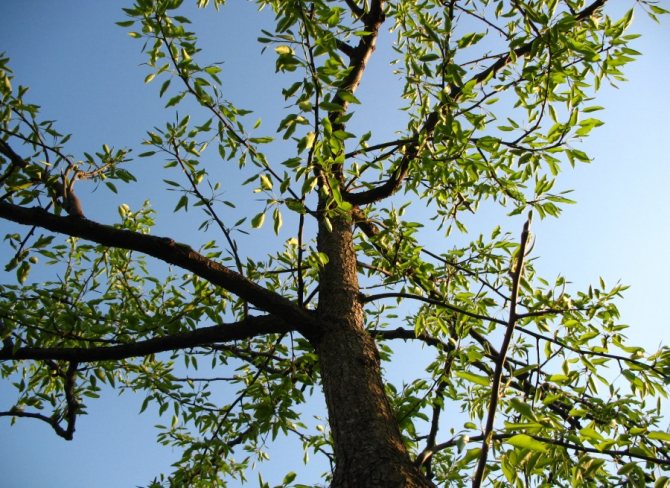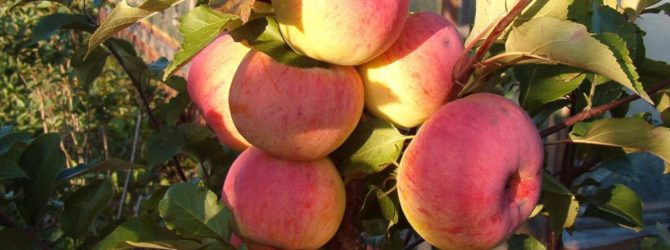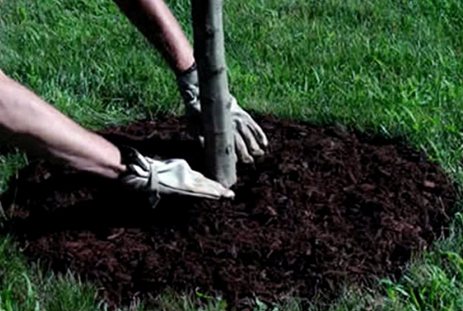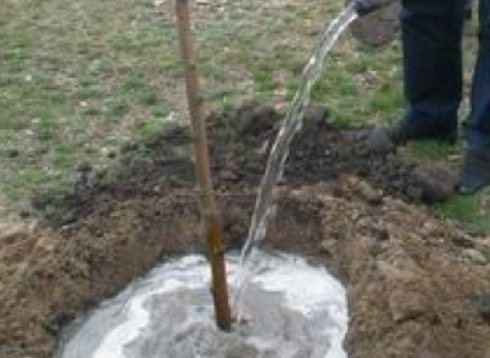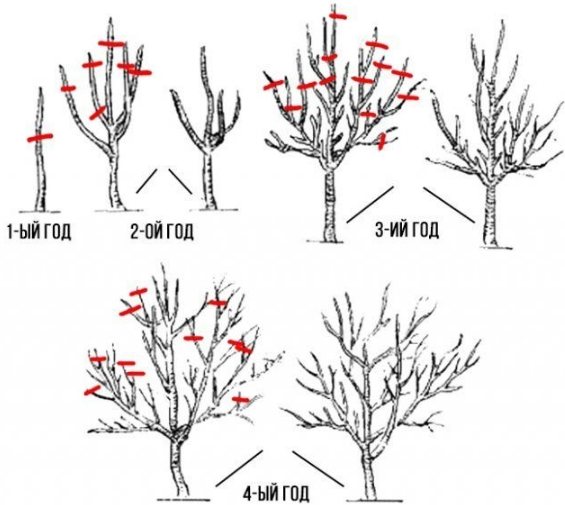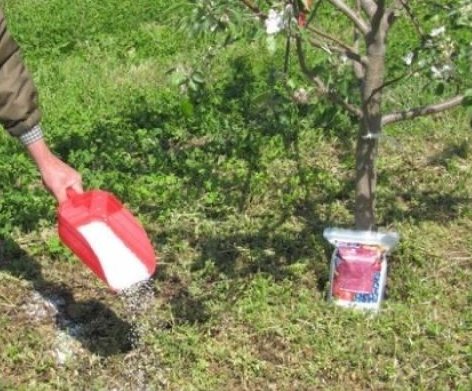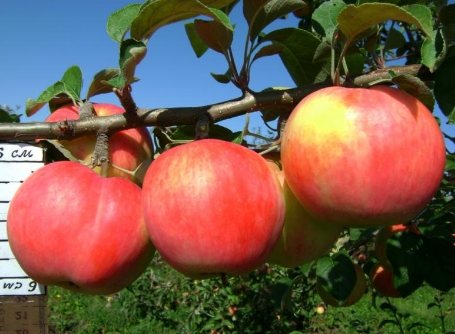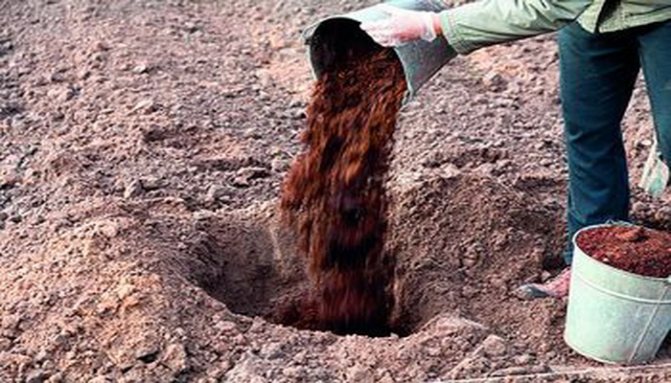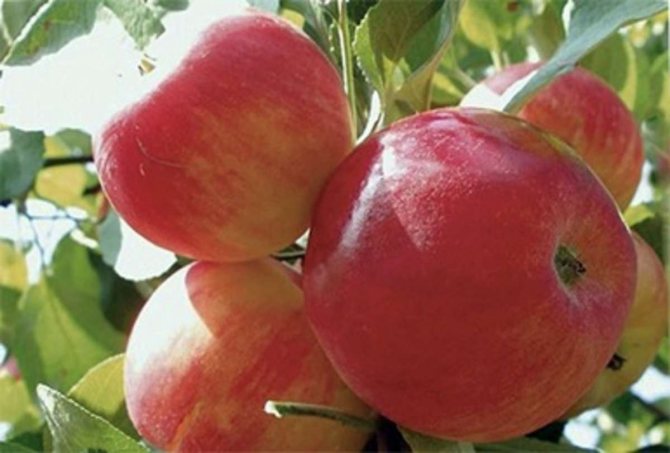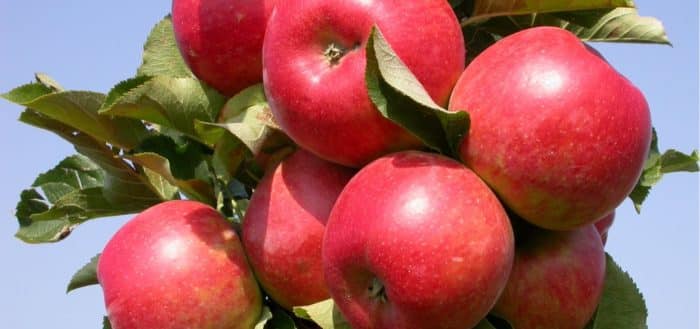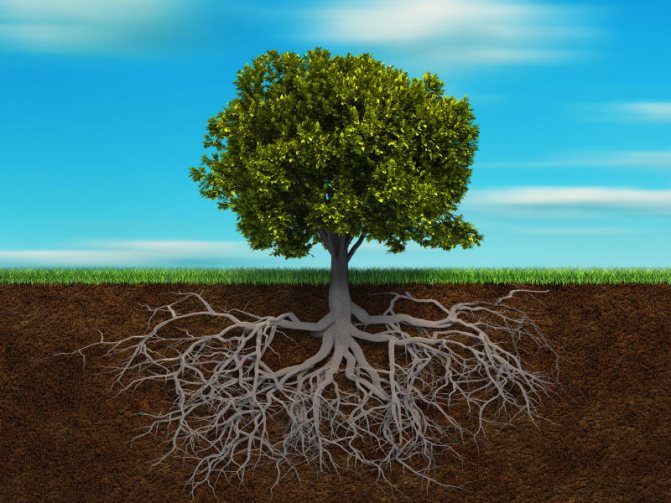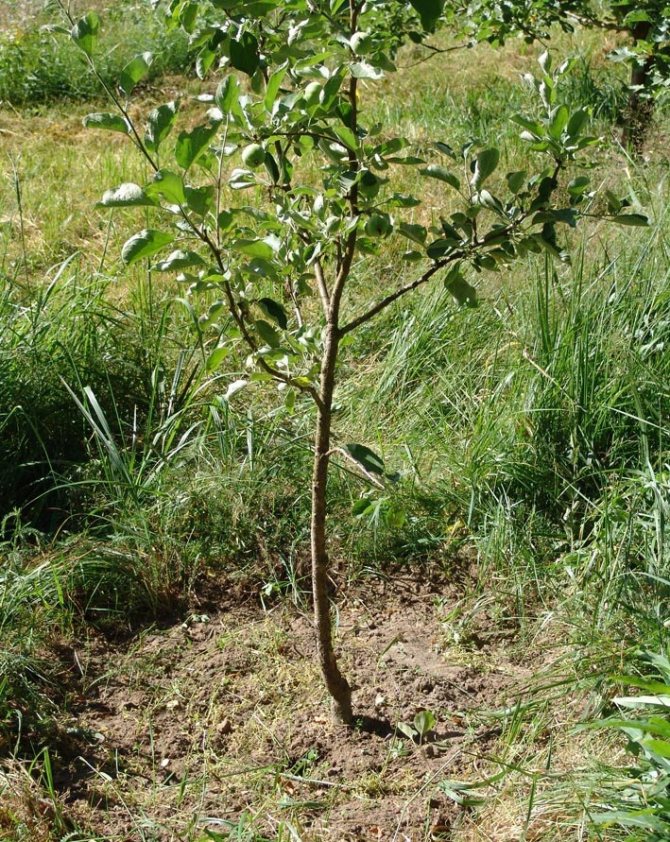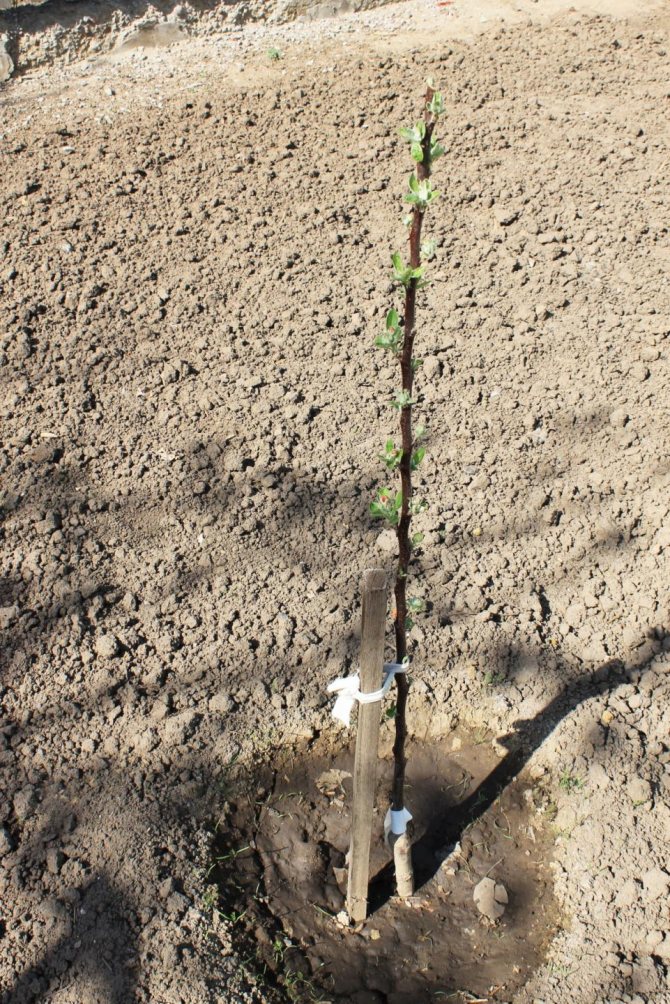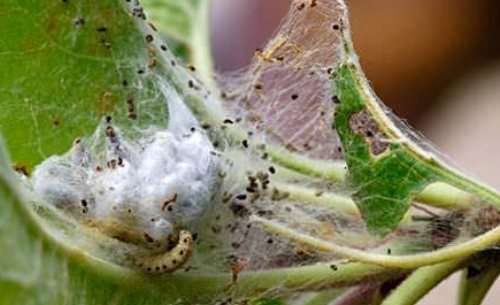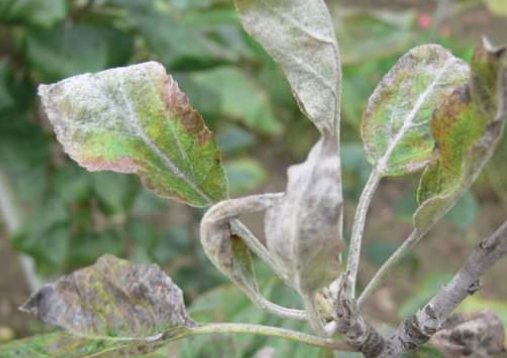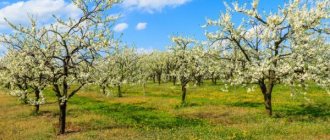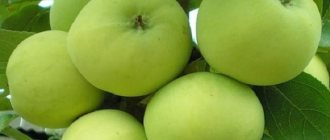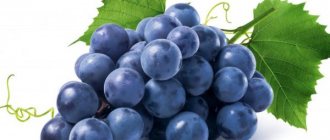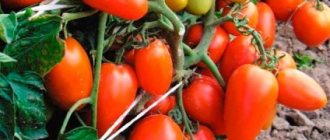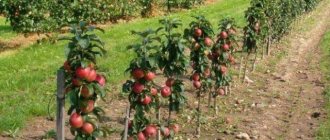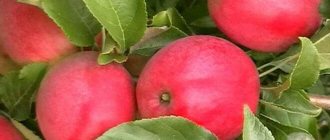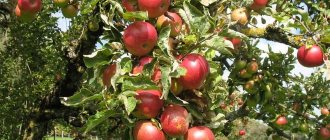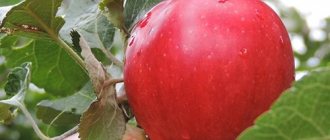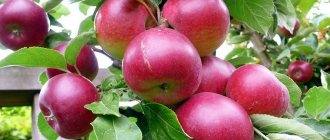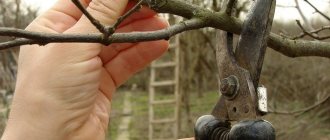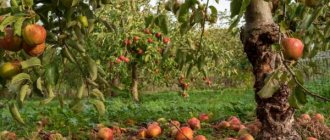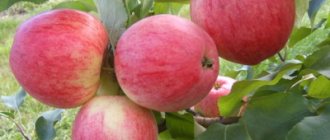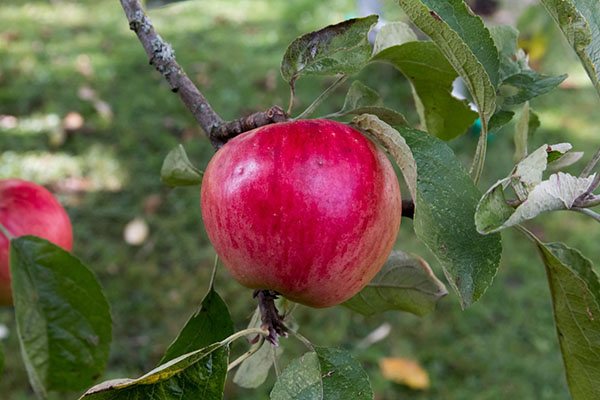
The apple variety Uslada is able to become the heart of any garden. Its delicate bloom pleases the eye, and the tasty and juicy fruits saturate the body with fiber, mineral salts and organic acids. Before planting an apple tree, you should find out in advance about the features of care. This will make it possible to obtain beautiful, juicy and fragrant fruits annually in large volumes.
Description, photo of the variety
A variety with such a promising name was bred by Michurin's student and follower, S.I. Isaev on the basis of Moscow State University in the framework of experiments on crossing cultivated apple trees with wild ones.
In 1996, the Uslada apple tree was approved for cultivation in the Central region of Russia, where to this day it is successfully cultivated both in private gardening and in industrial gardens.
Advantages and disadvantages
Among individual characteristics The Uslada varieties are worth highlighting the following:
- Excellent quality characteristics of apples;
- Good frost tolerance;
- Resistance to scab pathogens;
- Rapid entry into the fruiting phase.
Obvious flaws that would create difficulties for gardeners, difficult to name. The only thing worth paying attention to is the crown can develop very actively, as a result of which the apple harvest may turn out to be uneven.
Tree morphology and shoot-forming ability
Uslada apple trees differ good growth rates, in height they reach 3 - 4 m and are medium-sized.
Spherical crown, over time can transform into elliptical, thick, powerful, requiring careful and competent formation. The crown is composed of medium-sized skeletal branches growing vertically at a slight slope. Shoots are rounded in cross-section, with small internodes; in the sun you can see slight pubescence.


Branches of Delight with ripening fruits.
The leaves are rather large, oval, slightly elongated with a sharp end; pubescence is noticeable along the entire perimeter of the lower part of the leaf plate.
Fruit
Fruits can grow in size from medium to large, their average weight ranges from 100 g to 135 g, but you can find larger specimens weighing up to 180 g. The apples, round in shape, slightly elongated at the base, are covered with yellow-green dense smooth skin on top. The blush is very bright, crimson, covering almost the entire fruit.
White pulp, with a barely noticeable pink tint under the skin itself, sweet and sour, dense and crunchy, its consistency is very appetizing and pleasant.
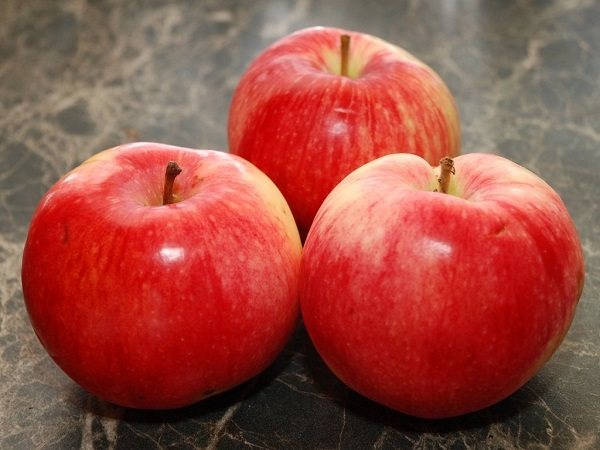

Apple fruits of the Uslada variety.
Important! Uslada apples are excellent for dietary nutrition, due to the fact that they contain a huge amount of vitamins and minerals necessary for the healthy functioning of the body and the gastrointestinal tract in particular.
Tasting assessment
The name Delight speaks for itself: the fruits have the best taste characteristics, excellent commercial qualities, for which they received a very high score in assessing taste. We did not find the exact numbers.
Yield
An adult tree of this apple variety is capable of producing up to 80 kg of fruits from a tree.
The fruits are firmly attached to the cuttings, which eliminates the problem of shedding ripe apples.
Self-fertility
Delight refers to self-fertile type of apple trees, that is, in order to obtain a regular high-quality crop in an amount of at least average, it is necessary to provide it with cross-pollination varieties such as:
- Grushovka;
- Orlik;
- Bogatyr.
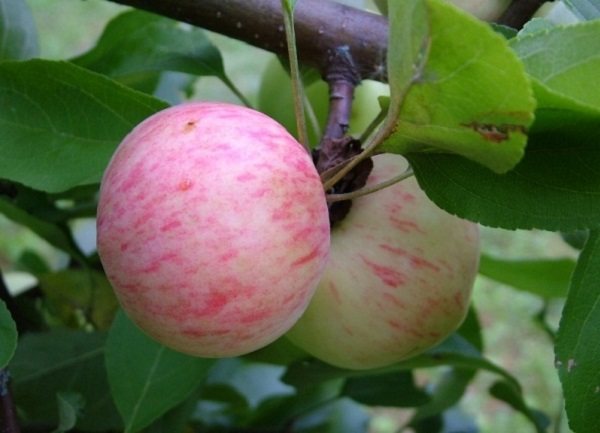

Grushovka.
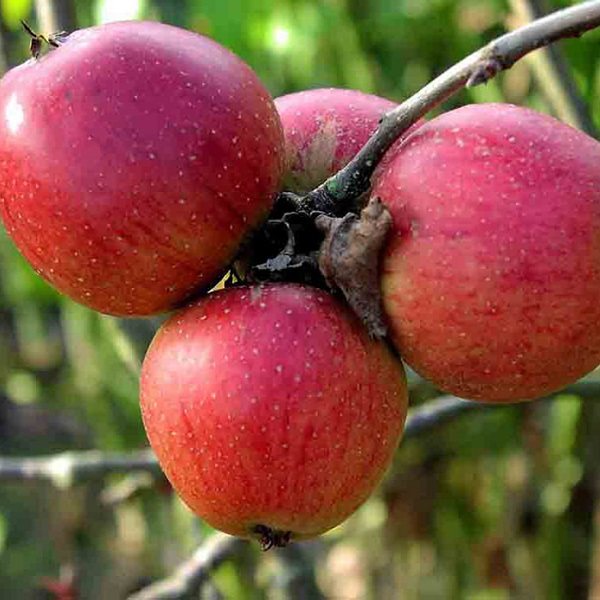

Orlik.
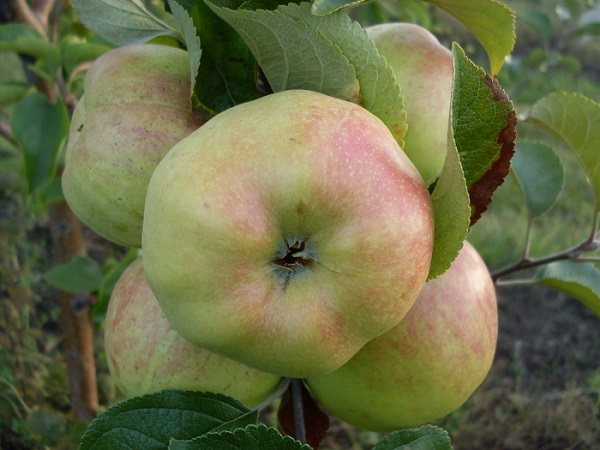

Bogatyr.
Winter hardiness and disease resistance
The Uslada variety belongs to frost-resistant, winters well in the middle lane, tolerates sudden temperature changes well.
In the hot summer recommended increased watering, but care in such weather conditions does not imply any additional agrotechnical measures. Litter of foliage and fruits during drought was not observed.
High performance resistance to pathogens of such a disease as scab, it allows you to cultivate this variety even in a rainy summer.
Advantages and disadvantages
Apple tree Christmas
Amateurs and experienced gardeners have already appreciated the clear advantages of the Uslada apple tree, the name of which speaks for itself:
- not afraid of cold weather and severe frosts;
- resistant to diseases (including scab) and pests;
- not afraid of wet soil;
- a bountiful annual harvest with proper care (the variety can also be used for commercial cultivation);
- high-vitamin fruits;
- It does not require special care.
Note! The variety has one drawback, which can hardly be called significant - the apple tree requires annual pruning of excess branches to form its crown in such a way that the sun's rays penetrate well through the branches, and they, in turn, grow only in the upper direction.
When planning to plant this apple variety on your site, it is worth remembering only some of the features of its cultivation in order to obtain a uniform harvest - the annual pruning of the thickened crown and the presence of pollinating varieties in the neighborhood. Fully caring for the tree, the owner of the garden will annually receive delicious apples with a mild raspberry aroma. At the same time, they will not only delight with taste, but will be useful for the body - due to the high content of nutrients, apples are suitable even for dietary nutrition.
Testimonials
Anna. Stavropol. A wonderful variety! It bears fruit very abundantly and every year, it shows itself well in the care, there are no special problems, it adapts to everything. The apples are beautiful and delicious! Stored passably. I recommend it to everyone, especially to novice gardeners who have no special experience in growing apple trees.
Sergey. Yekaterinburg. I do not do gardening at all, more parents. Here they have such an apple tree growing. Delicious apples! I even eat them in the summer, while they are not yet ripe, so sour, but like in childhood! And when we bake a charlotte of them - the aroma for the whole house!
Ekaterina Sergeevna. Omsk. A one-year-old seedling was planted three years ago. It took root without any problems, it grows and does not cause trouble. We are waiting for the first harvest in a couple of years, although, looking at this baby, I think there will be no problems at all - I have chosen a good place, God forbid the weather will not let us down - we will enjoy! As soon as I hit the first apple, I will definitely post the pictures!
The history of the appearance of this apple variety
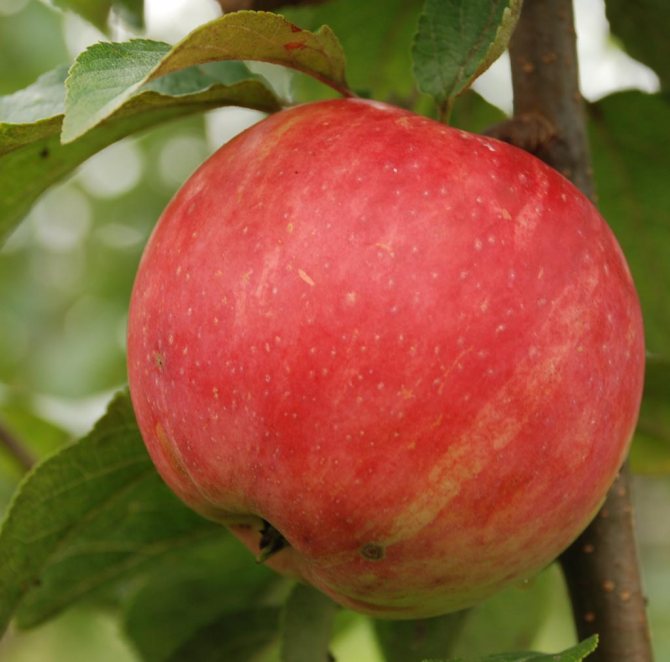

The variety was obtained by S.I. Isaev by crossing various wild and cultivated varieties. This happened in the Moscow Botanical Greenhouse at the University. Lomonosov.
This particular variety was obtained from the Narodnoye and Severyanka varieties in 1961, but the tests took a long time - 35 years, and the variety was zoned for planting no further than the central regions of Russia.
Timing and methods of landing
Planting Uslada can be carried out both in the fall (end of September) and in the spring, when the threat of return frosts has passed. When choosing a site for planting, it is imperative to take into account its location relative to the sun and the level of occurrence of groundwater.
A few weeks before, you need prepare the landing pit size 80 * 100 cm:
- The fertile soil layer from this pit is mixed with any organic fertilizer, which significantly improves the physical and mechanical properties of the soil, makes it looser, more breathable and nutritious;
- Drainage is placed at the bottom of the pit, then a peg is installed in the center to support the seedling, which is placed next to it;
- Before you start planting, you should conduct a visual inspection of the root system of the seedling, remove dead or decayed root areas;
- Next, the pit is covered with the soil mixture prepared earlier, tamping it in layers to avoid severe subsidence from irrigation, and thoroughly spill it with water.
Watch the video on how to plant apple trees correctly:
Planting an apple tree
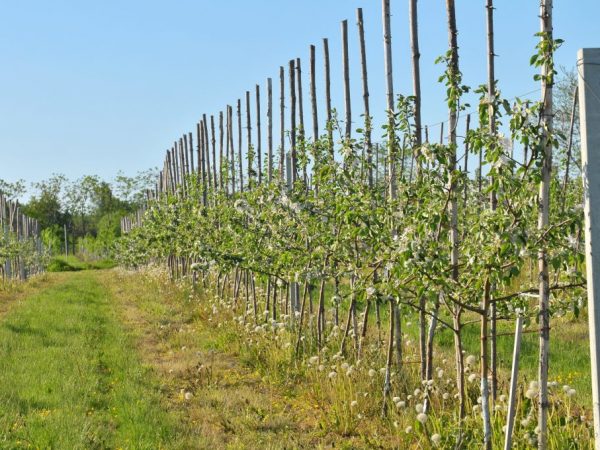

Young seedlings must be tied up
The Uslada apple variety is planted in the last days of April or in the fall, before the beginning of October. The tree needs fertile land. The ideal option is black soil.
Basic landing rules:
- a few days before it, you need to prepare holes with a depth of 60-75 cm; when planting several young trees, the distance between the holes should be at least 4 m;
- loosen the soil in the holes, add compost (10-20 kg per sq. m), superphosphate (25 g per sq. m), potassium and nitrogen fertilizing (10-15 g per sq. m);
- place the seedling in a hole and sprinkle with earth;
- tamp the soil in the near-trunk zone;
- water the seedling abundantly with water;
- after 7 days, cover the near-trunk soil with mulch, water the tree again.
Young trees should be tied to a peg. For the apple tree, you need to select a place protected from drafts.
Agrotechnics and cultivation features
Watering and feeding
Watering is carried out from spring to the end of autumn, it must be started during the budding period and, on average, carried out depending on weather conditions every one and a half - two weeks for an adult tree, in volume 15 l root... For young seedlings - as the top layer of the trunk circle dries up.
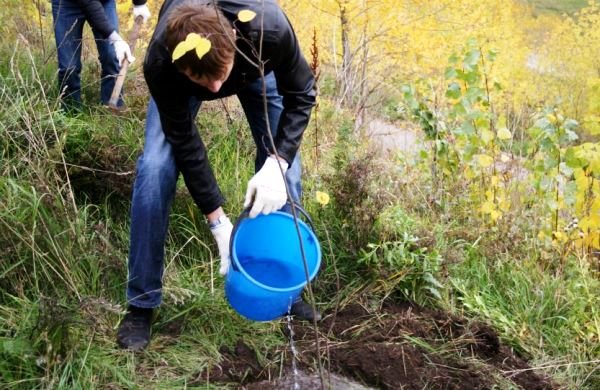

The seedlings are watered as the earth dries up in the near-stem circle.
In the spring apple trees are fed ammonium nitrate, in the fall necessary application of organic fertilizers and phosphorus-potassium mineral nutrient mixtures, which will contribute to a more successful resistance to frost and extremes of night and day temperatures.
Advice! If the soils of your site contain an insufficient amount of basic mineral elements, in order to obtain a full-fledged harvest, you need to carry out additional fertilizing with phosphorus-potassium fertilizers, starting from the budding period to pouring the fruits.
Pruning and shaping the crown
The most important part of care behind fruit trees - pruning... It is held Twice a year, in autumn it is of a sanitary nature - damaged and weak shoots are removed before wintering.
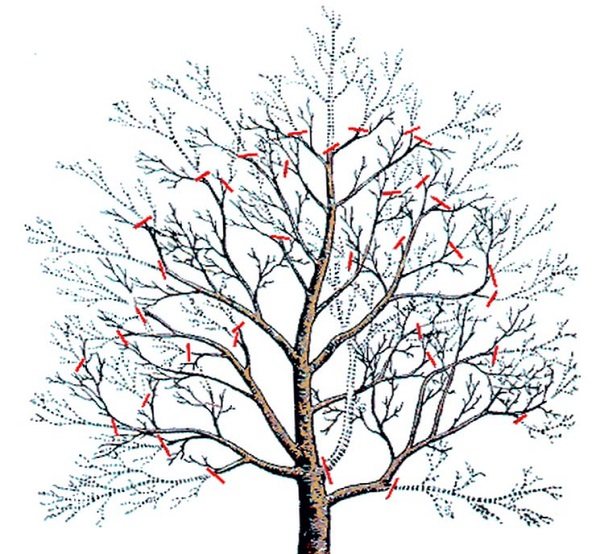

Apple tree pruning scheme.
In the spring the same pruning is carried out for crown formation and the removal of shoots that will not bear the crop, but by their existence are able to draw on the vitality of the apple tree. These shoots include crowns growing inward, old branches that no longer bear fruit, sick and obsolete.
See below for video instructions on how to crop correctly:
Important! For the Uslada variety, crown formation is very important: due to the active growth of the crown, excess shoots can interfere with the normal development and ripening of fruits, so it should be given special attention.
Water the apple tree during dry periods
| Stage 1. Process the near-trunk circle Loosen the surface around the tree to a depth of 10 cm... Remove grass and weeds, level the soil. Mulch with humus or peat... You can also use sawdust or grass cuttings. |
| Stage 2. Watering during dry periods Water if there is no rain for more than 2 weeks... The consumption rate for a tree depends on its size and ranges from 3 to 10 buckets. Use warm, settled water... Optimal watering time is evening after sunset |
| Stage 3. Form the crown correctly In the early years, follow the scheme shown in the photo... It is important to form a correct, longline crown. In the future, carry out sanitary pruning and thinning the tree as needed |
| Stage 4. Feed 2-3 times per season Use a complex mineral composition or organic matter... Ideally, alternate between different options. It is obligatory to carry out work in spring and autumn... You can also add another top dressing while the ovaries are forming. |
| Stage 5. Pick apples on time Harvest unripe fruits for storage... Remove by hand, fold gently and immediately place in a dark, cool room. Do not overexpose ripe apples on the tree... They start to fall |
Features of ripening and fruiting
Timing
Flowering
Delight begins to bloom at the end of spring, completely covered with bright fragrant delicate flowers by the second week of June.
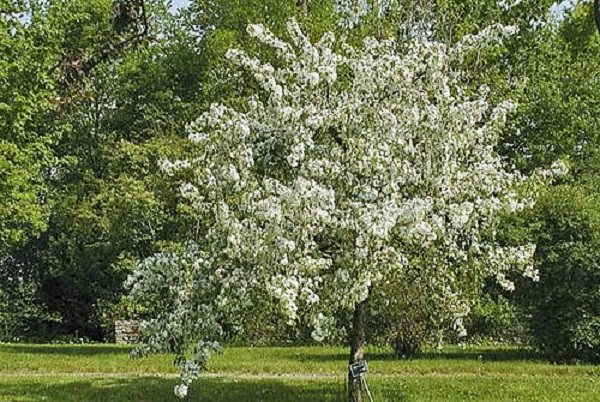

Apple blossom Delight.
The beginning of fruiting
For this variety, the fruiting phase begins approximately for 4 - 5 years, which is fast enough compared to other large-fruited varieties.
Maturation and keeping quality
The fruits can be consumed from the middle of summerif you like sour taste. However, they gain a sufficient amount of sugars by the end of summer, then ripening occurs. Harvesting is carried out in September.
To lie down fruits can until the end of January, and with early removal - until the end of winter.
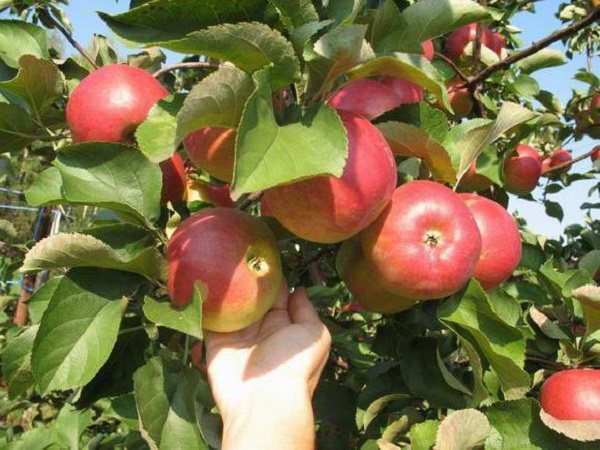

Fruit size of Delight.
Fruit characteristics
Uslada apples can be classified as dessert apples. Ripe fruits have a pleasant sweet and sour taste and a light raspberry aroma. The pulp of ripe fruits is tender and very juicy, characterized by high density and fine-grained structure.
The fruits of the Uslada apple tree belong to the category of universal use. Ripe apples of this variety can be consumed and stored fresh, as well as used for the preparation of various preparations for long-term storage.
In addition to excellent taste, the fruits of the "Uslada" variety are characterized by many useful properties, which are due to the high content of vitamins, as well as pectin and sugars. It should be noted that the amount of vitamin C in these apples is twice the average for other varieties.
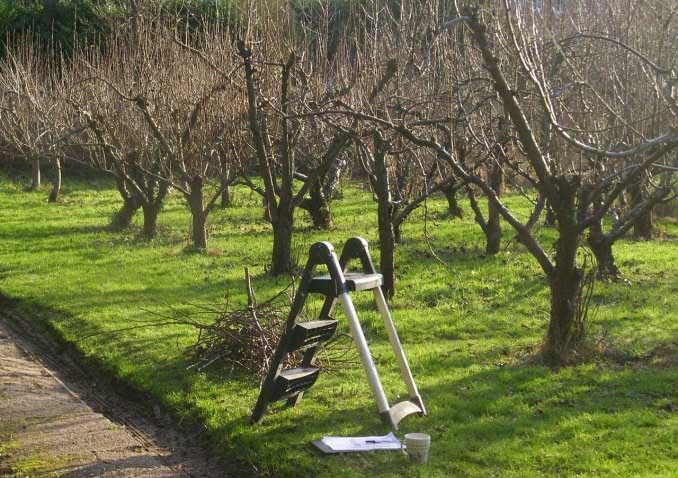

The fruits of the Uslada variety are recommended for baby food and are also included in the diet.
We also invite you to learn about the varietal characteristics of Champion apple trees.
Apple tree Delight. Subspecies and variants
Columnar
The Uslada columnar apple variety does not exist. Let's talk in general about this type of apple trees.
Columnar apple trees require constant care... Starting from planting, in which the root system needs to be formed, ending with regular pruning.
This type of apple tree is very helpful for gardeners when there is not enough free space on the site.
On a dwarf rootstock
Growing Delight on a dwarf rootstock has the meaning, if you need to accelerate onset period fruiting, as well as increase resistance to frost and scab.
The cultivation of this type of fruit typical for regions with a harsh climate and cold snowy winters.
On a clone rootstock
Clonal rootstocks versus seed able to steadily adopt genetic traits, which is especially important if there is a need to grow an apple tree with a certain set of qualities.
Diseases and pests
| Apple moth Signs: makes clutches under the bark, where the larvae hibernate. In the spring, they begin to feed on leaves and make nests, as in the photo, where new caterpillars are hatched. Prevention and control: removal of peeling bark, whitewashing of the trunk. Spring treatment with Zolon solution |
| Powdery mildew Signs: occurs in very damp, cold periods. A whitish bloom appears on the leaves, then goes on to the branches. Prevention and control: Removal of all affected areas. Spraying trees with a solution of copper oxychloride or copper sulfate |
Features of growing in the regions
Leningrad region and northwest Russia
Despite the amount of precipitation in summer and low total temperatures of sunny days in summer, Delight is quite suitable for growing in this region. due to its excellent adaptation to growing conditions and resistance to scab.
Moscow suburbs
Despite the fact that Uslada responds very well to cultivation in highly fertile soils, unpretentiousness and great vitality make it possible to grow it in this region.
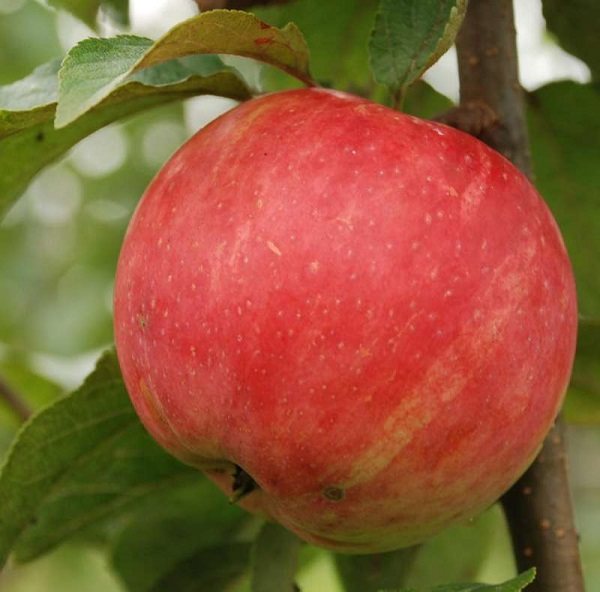

Delight is very unpretentious in cultivation.
Siberia
Delight has a certain winter hardiness, but for growing in Siberia, it is best to use a dwarf frost-resistant stock, which will definitely ensure the successful cultivation of this apple tree.
Region of natural growth
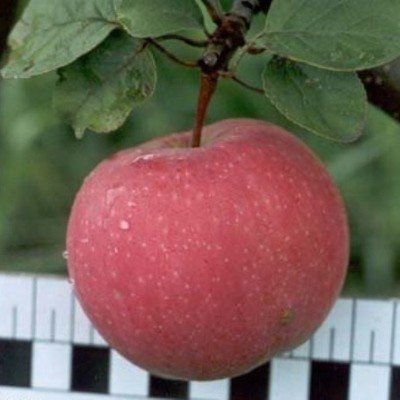

As we already mentioned, apple tree Uslada, first of all, lives in the European part of Russia.
However, due to its excellent winter hardiness and endurance, Uslada can take root well in other regions. This apple tree is especially good for those parts of the country where cold and rainy summers are often observed - the resistance to scab disease in such trees is extremely high.
Generally this variety is quite unpretentious and hardy, so even novice gardeners can grow such a tree.
Care Tips
There are many tips that will allow you to easily cope with caring for an apple tree and get a harvest in a short time.
Watering
Watering should be carried out in a dry season - add 10-20 liters of water under each tree. Be sure to protect the liquid under the sun.
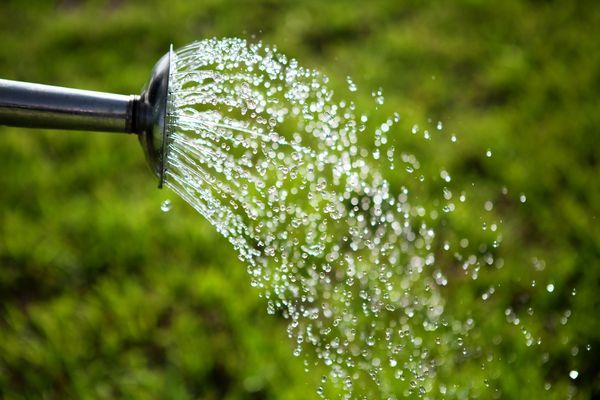

Top dressing
Use complex formulations for fertilizers. You can replace chemicals with organic matter - mullein infusion or humus.
Loosening the soil
Loosening the soil regularly. It is imperative to remove weeds that take nutrients from the soil.
Seasonal processing
During the season, irrigate the apple tree from pests and diseases. Use preparations based on copper sulfate, folk remedies.
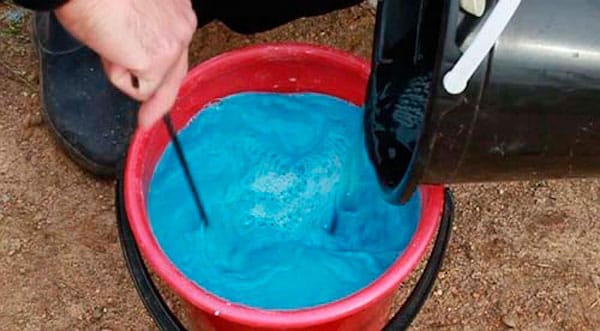

Pruning
In the first year of life, the main trunk is shortened. In the following years, shoots, dry or broken branches are cut.
Mulching
Use peat, compost for mulching. Mulch layer - at least 5 cm. If a nutrient layer is used, it is better not to use fertilizers, thanks to melt water, the plant will receive everything it needs.
Yield
Another advantage of this grade - his propensity for excellent yields... Moreover, the tree begins to bear a large number of fruits early enough, already in the fourth or fifth year of its life. In general, the harvests are quite abundant, and they are also distinguished by their amazing regularity.
From year to year, a tree of this variety can bear a huge amount of fruit, which, of course, cannot but rejoice. On average, the yield of one apple tree is estimated at about 60-80 kg of ripe fruits.
Harvesting and storage
Uslada apples are ready for consumption at the end of summer, but it is better to postpone the mass harvest of fruits until September, when the apples will increase their sweetness and become more attractive in appearance.
Important! With an early harvest, the shelf life of plucked apples increases, up to mid-spring, while the autumn harvest is successfully stored until the end of winter.
For harvesting, you should choose only a sunny, dry day, and the best place to store the fruits would be a cellar or another cool room with a low level of humidity. It is advisable to put no more than two layers of apples in one box. Subject to the rules of cultivation, the Uslada apple tree will fully justify its name, every year delighting with a plentiful and very tasty harvest of fruits.
How is the pollination of an apple tree of this variety
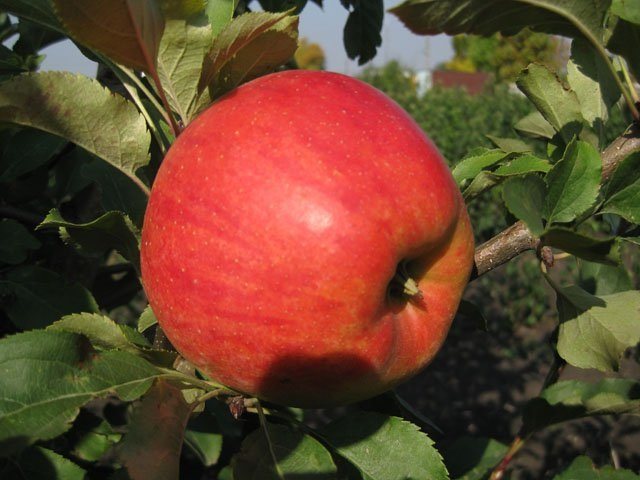

This variety does not have a remarkable quality of self-pollination and for it to occur, the apple tree should be planted as high quality as possible next to other varieties of apple trees.
The variety of neighboring apple trees can be anything; this will not affect the quality of pollination. But Grushovka and Papirovka are still considered the best pollinators.
Apple tree varieties are also suitable:
- The president;
- Orlik;
- Bogatyr;
- Welsey;
- Lingonberry;
- Bolotovskoe.
Provided that they are planted at a distance of no more than 4 m.
Regional cultivation
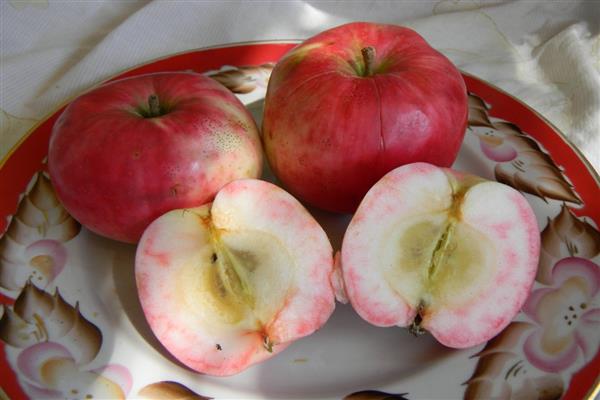

Leningrad region, North-West region.
Although there is a lot of precipitation in this area in summer, and the temperature conditions are not so great, the variety can be grown here, as it adapts perfectly to the climate and is immune to scab.
Moscow region.
Although the home apple tree Uslada responds well to cultivation on soils with high fertility, but thanks to its undemanding high vitality, it can be cultivated in this area as well.
Siberian region.
The Uslada apple variety is resistant to winter, however, for cultivation in the Siberian region, it is recommended to use a dwarf frost-resistant stock, thanks to which the tree will surely grow successfully.

